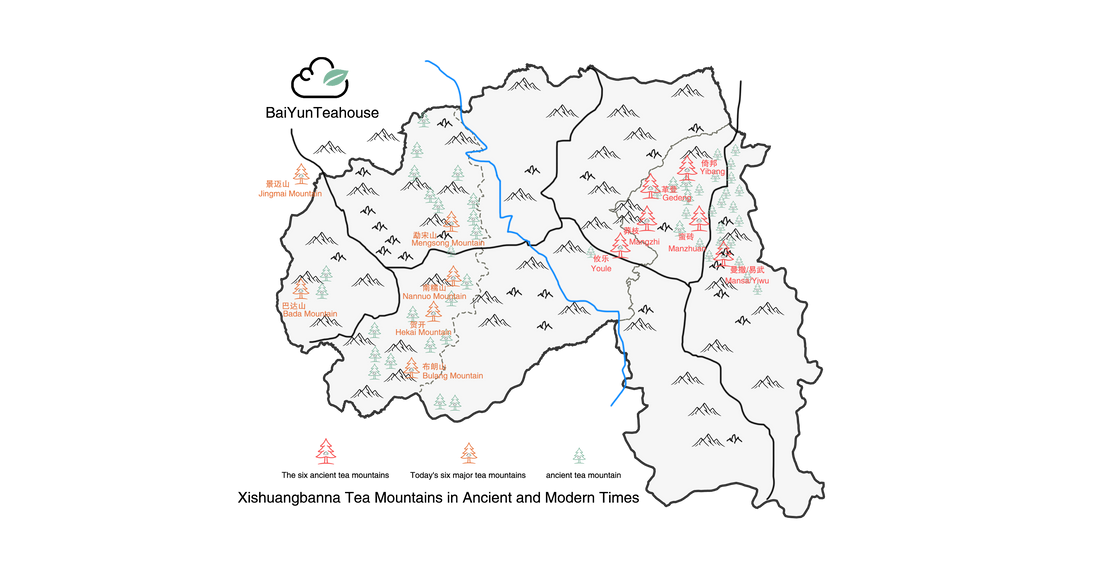
Comparative map of the six major tea mountains in ancient and modern times

I made a map of Pu'er tea mountains, marking the specific locations of the "ancient six major tea mountains" and the "new six major tea mountains" in Yunnan tea mountains.
Many tea lovers are familiar with the "six major tea mountains", but they may not know that the two "six major" actually refer to different eras and geographical blocks.
☯️ The ancient six major tea mountains: the birthplace of ancient tribute tea
The ancient six major tea mountains are a concept handed down since the Qing Dynasty, mainly concentrated in the east of the Lancang River, including:
Youle Mountain
Mangzhi Mountain
Manzhuan Mountain
Gedeng Mountain
Yibong Mountain
Mansa Mountain
These hills are mostly in the north of Mengla County today. In the early years, they were one of the starting points of the Yunnan-Tibet Tea Horse Road. Tea merchants, tribute tea official roads, and traditional tea-making methods of ethnic minorities in the Qing Dynasty intersected here. There are dense ancient tea gardens here, which is the earliest large-scale cultivated ancient tea forest in Yunnan.
These tea mountains are the place where the emperor's tribute tea is located and are also an important starting point of the ancient Tea Horse Road.
🛤️ New Six Tea Mountains: Famous Mountains in Modern Pu'er
The new six tea mountains are a new order gradually formed in the market and production areas with the rise of the Pu'er tea craze in the 21st century. They are mainly west of the Lancang River, that is, today's Menghai County and its surrounding areas. Including:
Blang Mountain (including Laobanzhang)
Nannuo Mountain
Bada Mountain
Mengsong
Hekai
Pasha
These six major tea mountains have become the protagonists in the Pu'er market with keywords such as "pure materials from ancient trees", "famous mountains in villages", and "original ecological tea gardens". Among them, Laobanzhang is the most famous and is known as the "king of tea".
If the ancient six mountains are the historical tea mark,
then the new six mountains are the core of contemporary Pu'er.
One side is precipitation, and the other side is explosion.
My map clearly marks the two "Six Great Tea Mountains" on the Xishuangbanna topographic map. You will find that:
The ancient six mountains are mostly concentrated in the north of Mengla County, with a high altitude and a humid and cool climate.
The new six mountains are distributed in the mountains running north-south in Menghai County, bordering Myanmar, with dense vegetation and more complicated transportation, but higher market access.
A map is not just a piece of paper. If you see its direction clearly, you will understand the root of Pu'er tea flavor.
The copyright of this map is owned by baiyunteahouse. If you need to use it, please contact baiyunteahouse@gmail.com. It can only be used after permission.
🍃 Conclusion: A cup of tea connects two time and space
Whether you are a new tea drinker or an old tea drinker, these two groups of "Six Great Tea Mountains" are mountains you can't avoid.
